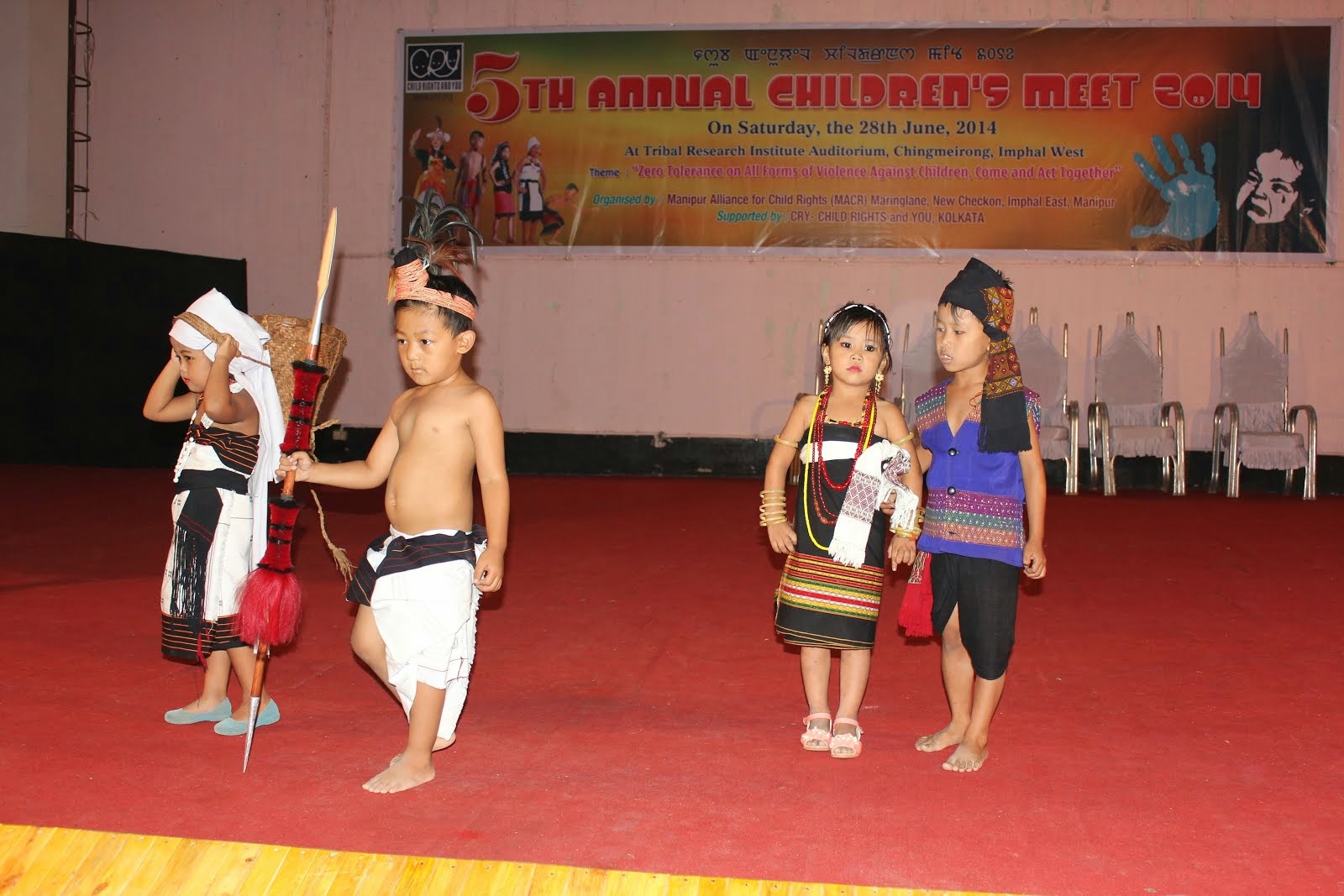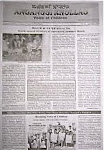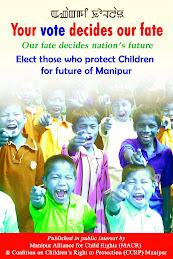Special Rapporteur on Violence against women, its causes and
consequences finalises country mission to India
NEW DELHI (1 May 2013) – At the end of her official country mission to India,
the UN Special Rapporteur on violence against women, its causes and
consequences, Ms. Rashida Manjoo, delivered the following
statement:
“I have
been mandated by the Human Rights Council to seek and receive information on
violence against women, its causes and consequences, and to recommend measures
to eliminate all forms of violence against women.
I would like to begin by expressing my thanks
to the Government of India for having invited me to visit the
country from 22 April to 1 May. The invitation, which was in response to a
request from my mandate, was received prior to the events that led to the death
of a young woman in Delhi India
During my visit, I held meetings in New Delhi , Rajasthan, Gujarat, Maharashtra
and Manipur, and gathered information from other states, including Tamil Nadu. I am grateful to all my interlocutors, including Union
and State authorities, National Human Rights Institutions, representatives of
civil society organisations, and United Nations agencies. Most importantly, I
want to thank the individual women who shared their personal experiences of
violence and survival with me. The pain and anguish in the testimonies of loss,
dispossession, and various human rights violations, was visceral and often
difficult to deal with.
The Government of India has signed and
ratified numerous international human rights instruments and has also adopted
numerous progressive laws and policies at the Union
and State levels. Numerous laws, including amendments to existing laws, have
been enacted to address various manifestations of violence against women. Among
others, these include: the Indian Penal Code which broadly includes crimes
against women. This law includes the crimes of rape, kidnapping and abduction
for specified purposes, homicide for dowry, torture, molestation, eve teasing,
and the importation of girls, among others. More specific laws on crimes
against women include: the Criminal Law Amendment Act 2013, the Sexual
Harassment of Women at Workplace (Prohibition, Prevention and Redressal) Act
2013, the Protection of Women from Domestic Violence Act 2005, the Indecent
Representation of Women (Prohibition) Act 1986, the Scheduled Castes and the
Scheduled Tribes (Prevention of Atrocities) Act 1989, the Dowry Prohibition Act
1961, the Commission of Sati Prevention Act 1961, and the Immoral Traffic
(Prevention) Act 1956 among others.
Furthermore, the following Bills are currently under discussion: the
Indecent Representation of Women (Prohibition) Amendment Bill 2012, the
Readjustment of Representation of Scheduled Castes and Scheduled Tribes in
Parliamentary and Assembly Constituencies Bill 2013, the Removal of
Homelessness Bill 2013, the Prevention of Female Infanticide Bill 2013, the
Abolition of Child Labour Bill 2013, the Child Welfare Bill 2013, the Indecent
or Surrogate Advertisements and Remix Songs (Prohibition) Bill 2013 and among
others.
At the institutional level, the
realisation of the promotion and protection of human rights broadly, and women’s
rights and children’s rights specifically, are vested in numerous Union and
state level Ministries, Departments, Commissions, Committees and Missions for
the empowerment of women. Furthermore, I was informed about numerous programs and
policies that have been put in place in recent years to address the issue of
violence against women within a human rights and development framework. These
include schemes addressing the needs of victims of rape, trafficking, domestic
violence, and so on. Some of these schemes address counselling, support, skills
development, access to benefits and also to shelters. Public/private
partnerships have been forged within different spheres including the police
sector. The laws and schemes highlighted above will be analysed and discussed
fully in my mission report.
I
welcome the Government of India’s speedy response after the rape incident of 16
December. A judicial committee headed by the late Justice Verma was
established, and new legislative measures were adopted earlier this year. While
this legislative reform is to be commended, it is regrettable that the amendments
do not fully reflect the Verma Committee’s recommendations.
It is
unfortunate that the opportunity to establish a substantive and specific
equality and non-discrimination rights legislative framework for women, to address
de facto inequality and
discrimination, and to protect and prevent against all forms of violence
against women, was lost. The speedy developments and also the adoption of a law
and order approach to sexual wrongs, now includes the death penalty for certain
crimes against women. This development foreclosed the opportunity to establish
a holistic and remedial framework which is underpinned by transformative norms
and standards, including those relating to sexual and bodily integrity rights. Furthermore,
the approach adopted fails to address the structural and root causes and
consequences of violence against women.
The
Protection of Women from Domestic Violence Act is a positive development in the
aspirational goal of protection for victims of family violence. The discrepancy between the provisions of the laws and the effective
implementation thereof, whether through the use of the police generally or the
Protection Officers in particular, was a recurrent complaint which I heard.
Despite provisions intended to offer legal, social and financial assistance to
victims, many women are unable to register their complaints. As a result, the
vulnerability of women increases, and further, they are also deprived of the
benefits prescribed in the law - as proof of registration of cases is required
for access to many benefits. Furthermore, prevention of violence, as a core due
diligence obligation of the State, does not feature in the implementation of this
law.
Despite numerous positive developments,
the unfortunate reality is that the rights of many women in India
Manifestations of violence against women
Numerous experiences of violence, whether
direct or indirect, in different spheres including the home, the community, and
in institutions, whether perpetrated by state actors or condoned by the State,
was shared with me during the mission. Violence is being experienced in
situations of peace, conflict, post-conflict, and displacement among others. The
denial of constitutional rights in
general, and the violation of the rights of equality, dignity, bodily
integrity, life and access to justice in particular, was a theme that was
common in many testimonies. Violence against women as a cause and consequence
of de facto inequality and
discrimination was also a common theme in numerous submissions received.
Violence against women and girls in India
During
my visit, I heard numerous testimonies of many women who are survivors of domestic
violence, whether at the hands of their husbands or other family members. Many
of these women live in family settings with deeply entrenched norms of
patriarchy and cultural practices linked to notions of male superiority and
female inferiority. The lack of effective remedies, the failure of the State to
protect and prevent violence against women, the economic dependence of many women
on the men in their lives, and the social realities of exclusion and marginalization
when speaking out, often results in women accepting violence as part of their
reality. The current focus by state actors on
preserving the unity of the family is manifested in the welfare/social approach
and not in the human rights based approach. It does not take into consideration
the nature of relationships based on power and powerlessness; of economic and
emotional dependency; and also the use of culture, tradition and religion as a
defence for abusive behaviour.
Sexual
violence and harassment in India
On the issue of conflict-related sexual violence, it is crucial to
acknowledge that these violations are occurring at the hands of both state and
non-state actors. The Armed Forces (Special Powers) Act and the Armed Forces (Jammu
and Kashmir
In India
In consultations
in Manipur, I heard anguished stories from relatives of young women who have disappeared
without trace or who were found dead shortly after going missing. The lack of
response from the police is the norm in such cases, with the attitude being
that these are mostly elopement cases. I am deeply concerned about other consequences of such disappearances
of young women, including exposure to sexual abuse, exploitation or trafficking.
More generally, many tribal and indigenous women in the region are subjected to
continued abuse, ill-treatment and acts of physical and sexual violence. They
are denied access to healthcare and other necessary resources, due to the
frequency of curfews and blockades imposed on citizens. Moreover, the chronic
underdevelopment prevalent in the region, coupled with frequent economic blockades,
is having an impact on the overall cost of essential items, and is exacerbating
the already vulnerable situation of women and children living in the region.
Customary
and religious practices such as child marriages and dowry-related practices,
sorcery, honour killings, witch-hunting of women, and communal violence
perpetrated against cultural and religious minorities, were highlighted in
numerous testimonies. Communal violence, inspired by religious intolerance,
does manifest in some parts of India Gujarat massacre of
2002.
I am also
concerned about the declining female sex ratio in India
With
regard to domestic workers, I am dismayed by the prevalence of numerous
violations faced by these women and girls. Many of them, often migrant and
unregistered women, work in servitude and even bondage, in frequently hostile environments;
performing work that is undervalued, poorly regulated and low-paid. According
to testimonies, they are also denied access to essential services and resources
provided by the State, as they lack proper identification, and view this as a
barrier to access. They are often the victims of various acts of violence,
including sexual harassment and victimization by their employers and others.
I have also been informed that women with disabilities experience
numerous forms of violence, including sexual violence, forced sterilization
and/or abortions and forced medication without their consent. In addition,
their experience of discrimination, exclusion and marginalisation reinforces
the need for greater attention and specificity.
Conclusion
Numerous
human rights mechanisms have addressed the violation of women’s human rights in
India wing issues:
1) There
is a need for urgent measures to end the
alarming decline in sex ratios (CEDAW, CRC)
2) The
negative effect of personal status laws on the achievement of overall gender
equality (CRC, CCPR, and CEDAW). Such laws need to be reformed to ensure
equality in law (CEDAW).
3) The
social and cultural patterns of discrimination against women require urgent
action by the State (CEDAW).
4) Ensure
that all victims of domestic violence are able to benefit from the legislation
on domestic violence. Develop a comprehensive plan to combat all forms of
violence against women (CEDAW). Domestic violence is endemic. The Protection of
Women from Domestic Violence Act and
Section 498-A of the Indian Penal Code must be enforced effectively (CESCR).
5) The
implementation of the Armed
Forces (Special Powers) Act, the Public Safety Act and the National Security
Act, and the Armed Forces (Jammu & Kashmir) Special Powers Act should be
repealed (HRC, SR Summary Executions), as it perpetuates impunity (HRC), and is
widely used against Human Rights Defenders (SR HRD).
6) Grave
concerns are noted as regards the continuing atrocities perpetrated against
Dalit women. There is a culture of impunity for violations of the rights of Dalit
women (CEDAW). Concerns are further expressed for the failure to properly
register and investigate complaints of violations against scheduled castes and
tribes, the high rate of acquittals, the low conviction rates, and the alarming
backlog of cases related to such atrocities (CRC, CEDAW and CERD).
7) The
practice of devadasi is of concern (HRC). The effective enforcement of relevant
legislation and the Indian Constitution is required to end this practice
(CERD).
8) To expeditiously enact the proposed Communal
Violence (Prevention, Control and
Rehabilitation of Victims) Bill, 2005 with the incorporation of: sexual and gender-based crimes, including mass crimes against
women perpetrated during communal violence; a
comprehensive system of reparations for victims of such crimes; and gender-sensitive victim-centred procedural and
evidentiary rules, and to ensure that inaction or complicity of State officials
in communal violence be urgently addressed under this legislation.
9) Grave
concern is expressed about the continued existence of women and girls employed
as domestic workers and their experiences of sexual abuse (CEDAW).
10) Harmful practices on women and girls, including
forced marriage, dowry and dowry-related violence are of great concern
(CEDAW, CRC, CERD, and HRC). Violence and social sanctions due to inter-caste
relationships are also of concern (CERD).
11) The impact of mega-projects on the rights of women
should be thoroughly studied, including their impact on tribal and rural communities,
and safeguards should be instituted (CEDAW).
12) Continuing
disparities in literacy levels are of concern, in particular the educational status of scheduled castes, scheduled
tribes and Muslim women (CEDAW). Effective measures
must be adopted to reduce the drop-out rates among Dalit girls (CERD).
13) More
effort is needed to end customary practices which deprive women from underprivileged classes, castes and religious
minorities of their rights to human dignity and to non-discrimination (HRC).
I would like to encourage the
government of India
My comprehensive findings will be
discussed in the report that I will present to the United Nations Human Rights
Council in June 2014.”
ENDS
Ms. Rashida Manjoo (South Africa University
of Cape Town
.jpg)



















No comments:
Post a Comment